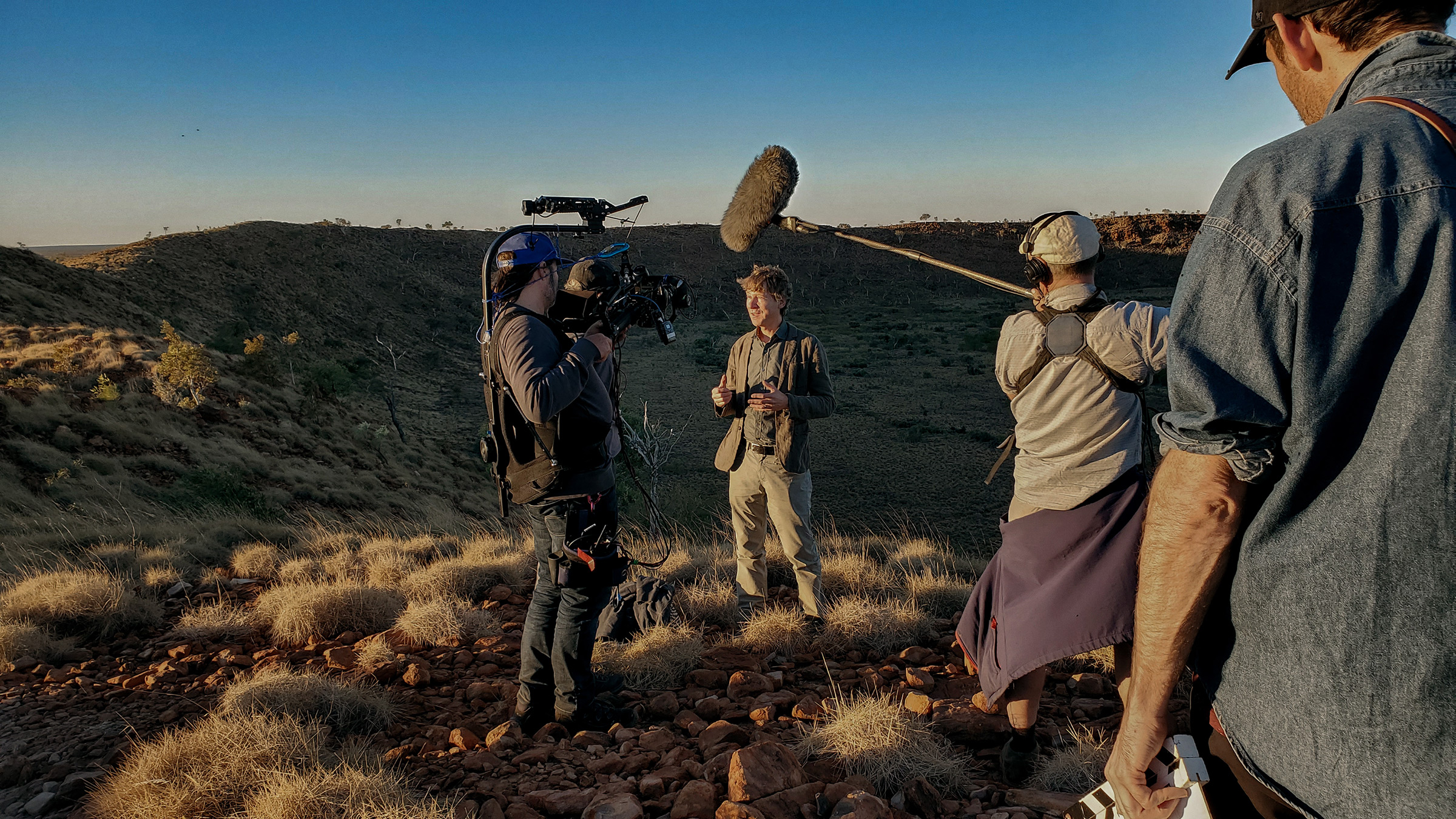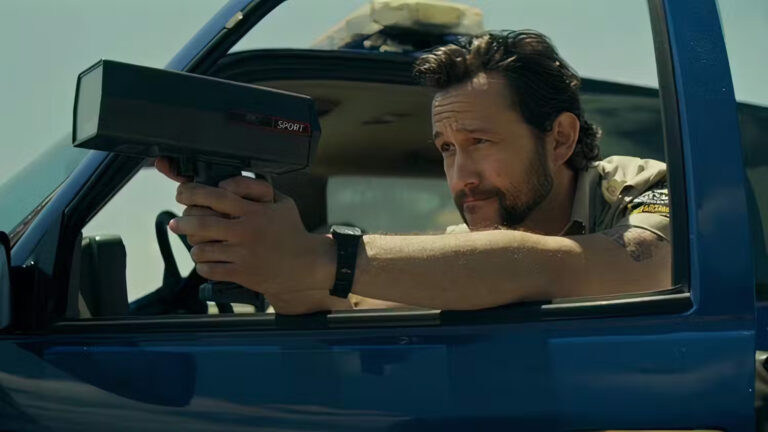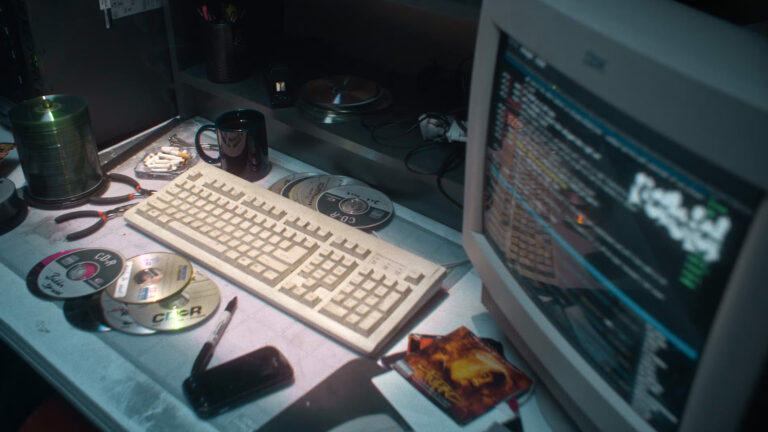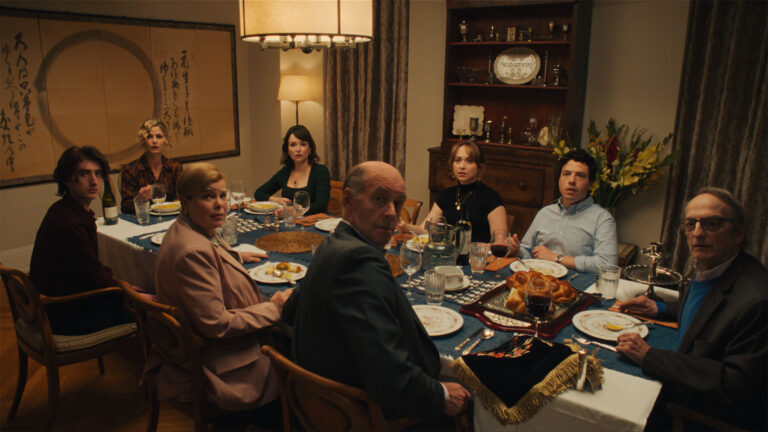After eight years of collaboration on projects like Nomad: In the Footsteps of Bruce Chapman and Lo and Behold: Reveries of the Connected World, it’s probably fair to say that editor Marco Capalbo and director Werner Herzog have a strong creative connection.
The fruits of this can be seen in their latest partnering, Fireball: Visitors from Darker Worlds, an Apple TV+ documentary that considers the history of mankind and the impact that meteorites have had on our lives.
Listen while you read…
HULLFISH: Tell me a little bit about the latest project you’ve worked on. It’s a documentary, correct?
CAPALBO: It is a documentary called Fireball. It is about meteors, asteroids, and all of that kind of stuff. The subtitle is Visitors From Darker Worlds. Very Herzog-ian subtitle and title, I guess.
HULLFISH: Absolutely.
CAPALBO: The director is Werner Herzog with co-director on this project Clive Oppenheimer who is a British geologist but has scientific knowledge that Werner might not have had.
HULLFISH: And you’ve worked with Werner a lot, correct?
CAPALBO: Yes. We’ve been working together for eight or nine years at this point I think. So, we’ve done a number of different projects.
HULLFISH: Do you remember how that relationship began and why it started?
CAPALBO: It started through a mutual friend who is a cinematographer who did some shooting on a few of Werner’s films. There was a shorter project, also a documentary, about the band, The Killers. Werner was directing a live stream for American Express. They did a series of live stream concerts with different directors doing it, and The Killers had asked for Werner. Werner of course had never heard of The Killers, but then they were from Vegas and so that helped.
Anyway, there was a short film that was part of the live stream that went on before, a kind of a documentary about them that Werner did. So, I was brought on to do that, and then we did four On Death Row films. We’ve done a number of other things, Fireball most recently. Just before that we did a documentary for the BBC. So anyway, we go back quite some years.
HULLFISH: To me, and I don’t know his entire filmography, but those seem to be films that are more like him than a film about fireballs. Tell me about how that happened and why this is a Werner Herzog movie?
CAPALBO: Well, of course, you’d have to ask him that for sure, but I think that in all of Werner’s docs and films there’s a kind of a curiosity about the world. So, if a topic comes in at him—as for me, I would say—we get immersed in it, get interested in it.
Of course, this topic of fireballs has an element that people rightly or wrongly may associate with Werner, which is that it has a dark cataclysmic end of the world kind of a feel to it also, but that’s really only part of it. Actually, it has a very humanistic take.
It is not by any means a National Geographic film with just strict scientific stuff and history. Of course, there’s elements of that in there, but that’s not the focus of the film. If you didn’t know anything about meteors, you’re going to learn some things. That’s certainly true, but it has a much more personal take on what these things have meant and could mean in the future.
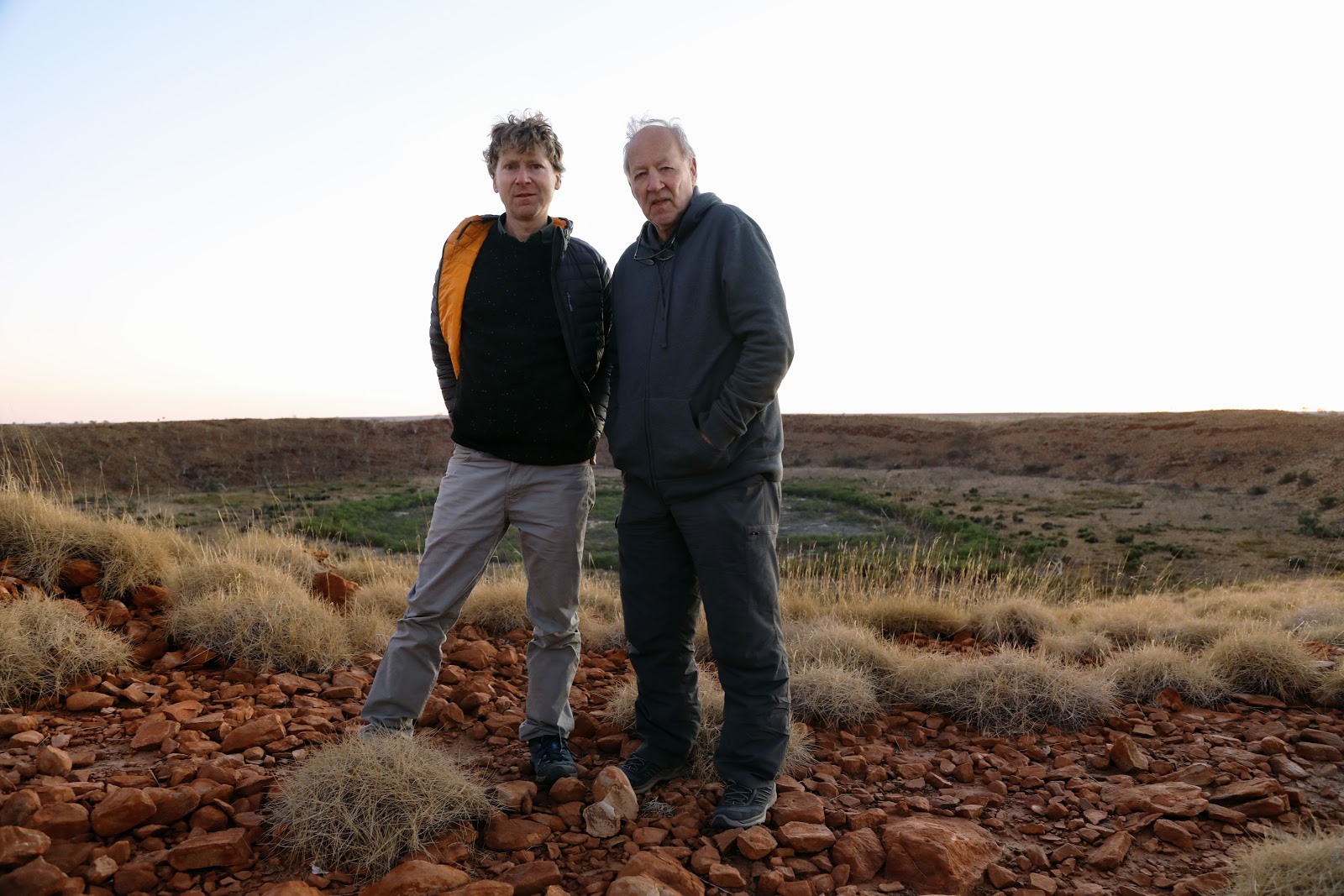
HULLFISH: I would think that it’s kind of hard to visualize. What kind of assistance did you provide to say, “I need these elements,” or were they simply always provided for you?
I’m working on a documentary right now where I’m finding that I need to ask the director for a lot of things. We’ve shot this much stuff, but I think that we need this other thing to make a transition work or to make the scene more interesting.
CAPALBO: In this film, because there was the decision that this was not going to try to be that National Geographic film, we were not looking for, “We’re going to have to animate this or we’re going to have to do this.” It was more about trying to find what visual elements we could use that were already out there, and these fell into two categories. There are, in fact, with one source in particular great footage of a big meteorite fall—I want to say 5 or 6 years ago, 2013 approximately—that fell in Siberia.
HULLFISH: I remember that.
CAPALBO: Yeah, and for whatever reason it seems like a lot of Russian drivers have dashcams in their cars. I don’t know what the backstory of that is, but it’s kind of a thing. There’s a tremendous amount of dashcam footage of guys who were just driving around quite early in the morning in Siberia, and suddenly this spectacularly large, unmistakable thing comes shooting across. I mean, it’s almost blinding to the eyes it’s so bright.
So, there was that and some security cam footage, similarly in that area that people found had all got put on YouTube over the years. So, we had access to that stuff. Of course, once we took pieces they had to go find them and license them, but that’s not my job, thank God. I do have to keep track of wherever it comes from, obviously. Then, there’ve been a number of Hollywood films that have tackled the subject, usually in these earth-destroying…
HULLFISH: Armageddon-type things.
CAPALBO: Exactly. I think one of them was even called Armageddon. The one that we liked the best and ended up using about a minute or so of footage from was a film called Deep Impact. That has a very spectacular crash or blast of a city wiped out, New York City being tsunami’d, which would seem to be against Werner’s aesthetic in one respect, but actually is not. He takes great pleasure in seeing how something like that can be done, and it’s done amazingly well.
We also have, I don’t think it was National Geographic, but a more scientific doc which had a frankly rather ludicrous visualization of the dinosaurs being eliminated, which was something that happened tens of millions of years ago complete with what’s considered the largest meteor strike that has been determined to have happened, which was down in Mexico.
HULLFISH: Yep, the Gulf of Mexico.
CAPALBO: Chicxulub yeah, now Cancun. So, we have footage from that which shows the dinosaurs in a very Disney way kind of looking up thinking, “Oh! Here comes this thing.” So, we actually left it in. The commentary is particularly amusing there. To Werner, it’s almost like a comic moment, but it actually does show that this thing wiped out most life on earth at that time. It was devastating.
I think that one was 10 or 12 kilometers across. That’s a big, big sucker. I guess it’s the last largest one that’s hit us, but as people point out in the film, inevitably, another will. The time span is what gets interesting. It could be in the next hundred million years. There’s no reason to think it’ll be in just a few years. It won’t.
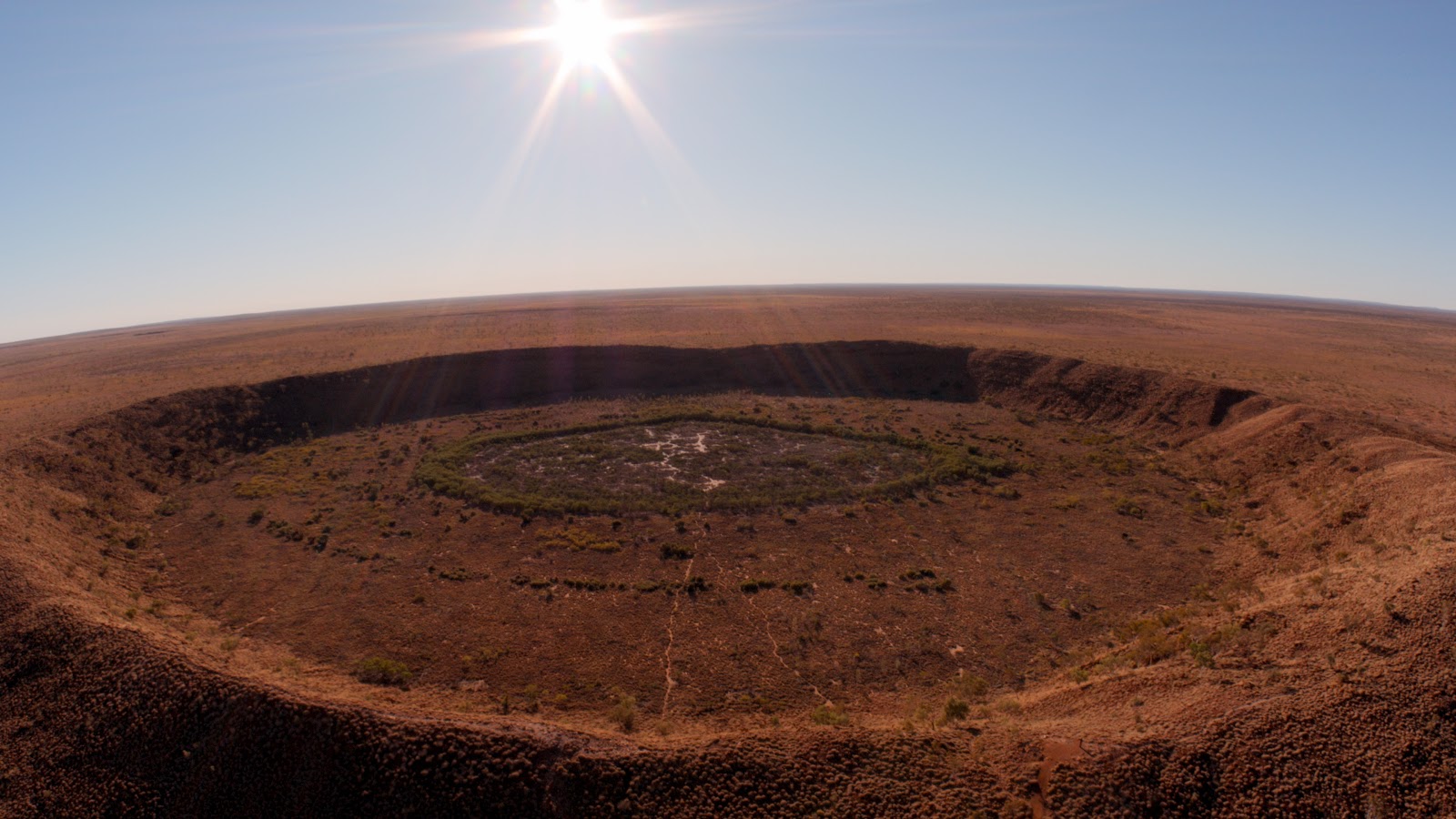
HULLFISH: What are you doing to help him stay in the right tone with footage coming from all over the place? It still has to be his film, feel like him, and feel like the rest of the film. How are you able to regulate that tone and help him manage that?
CAPALBO: I think that’s an interesting question because we have a couple of other things to say about Werner films, which is sort of known about him, is that there’s very little conventional B-roll. The B-roll that there is, is quite specific.
There’s a scene in the film which I think is very typical of Werner and that is made very much in the editing and it’s a scene which uses a piece of B-roll that—I don’t want to say was shot accidentally, that’s not true—but it would seem to have nothing whatever to do with the film. In fact, I think most people would say, “Well, we definitely don’t need that.” There was a famous and important meteor that had fallen in 1492 in France, and at that time people saw these things as signals from God. People were questioning if they had portent or meaning. So, this was all being discussed.
In the little town there in Alsace, France there’s a museum which houses the remains of this stone. It’s about a few feet across, a very large thing that had fallen in the field. Completely separate from that in the town hall—it’s a tiny little town—next to it in another part of the museum, there’s a completely unrelated installation, a very odd installation, which has a statue or bust of a man who’s a coal miner. He’s got the miner’s hat on with the light.
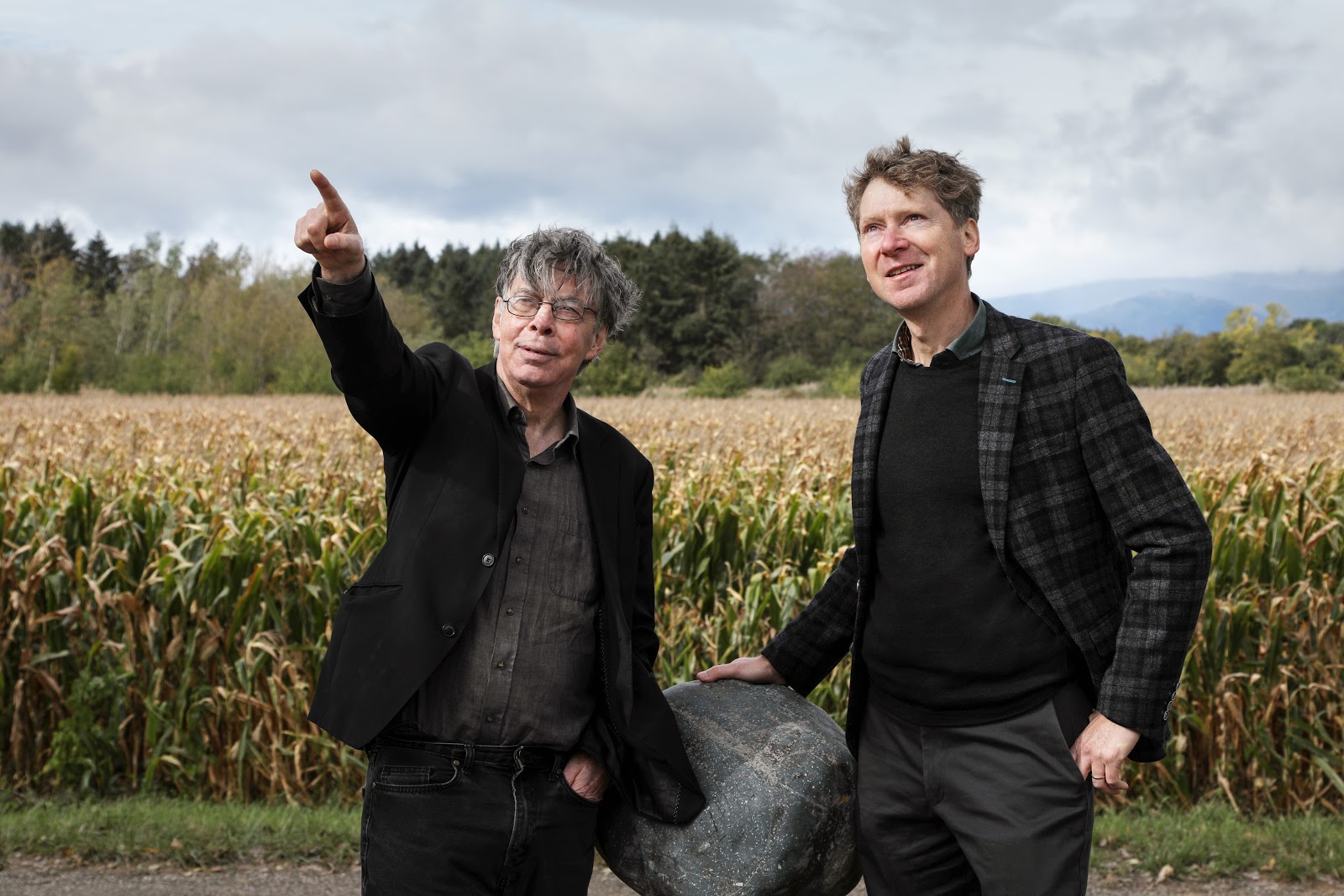
Through this low-tech, high-tech, they project a film onto the wall that also makes it seem as if he comes to life because this bust starts speaking. He is not speaking about the meteor whatsoever. It never comes up. He’s talking about the fact that this town used to be a mining town. He never mentions meteors. It has nothing to do with meteors. It’s in a separate part of the museum. I think most filmmakers would say, “Yeah, we definitely don’t need that,” but, however it happened, that got filmed.
So, we’re sitting in the editing room and we’re looking at the footage of the museum that did have to do with the stone, then we come to this thing. Again, certainly in a National Geographic film, that’s out. There’s no conceivable place for it. But in this film, it makes you think, “Aha. What can we do with this?”
Also, because we knew that we needed—which I think is another thing that I think is important in the editing, particularly for this film—to regulate the information because there is a lot of technical, scientific subject and there are scientists talking about different things and you could just get overwhelmed with this stuff. You definitely need a moment to step back.
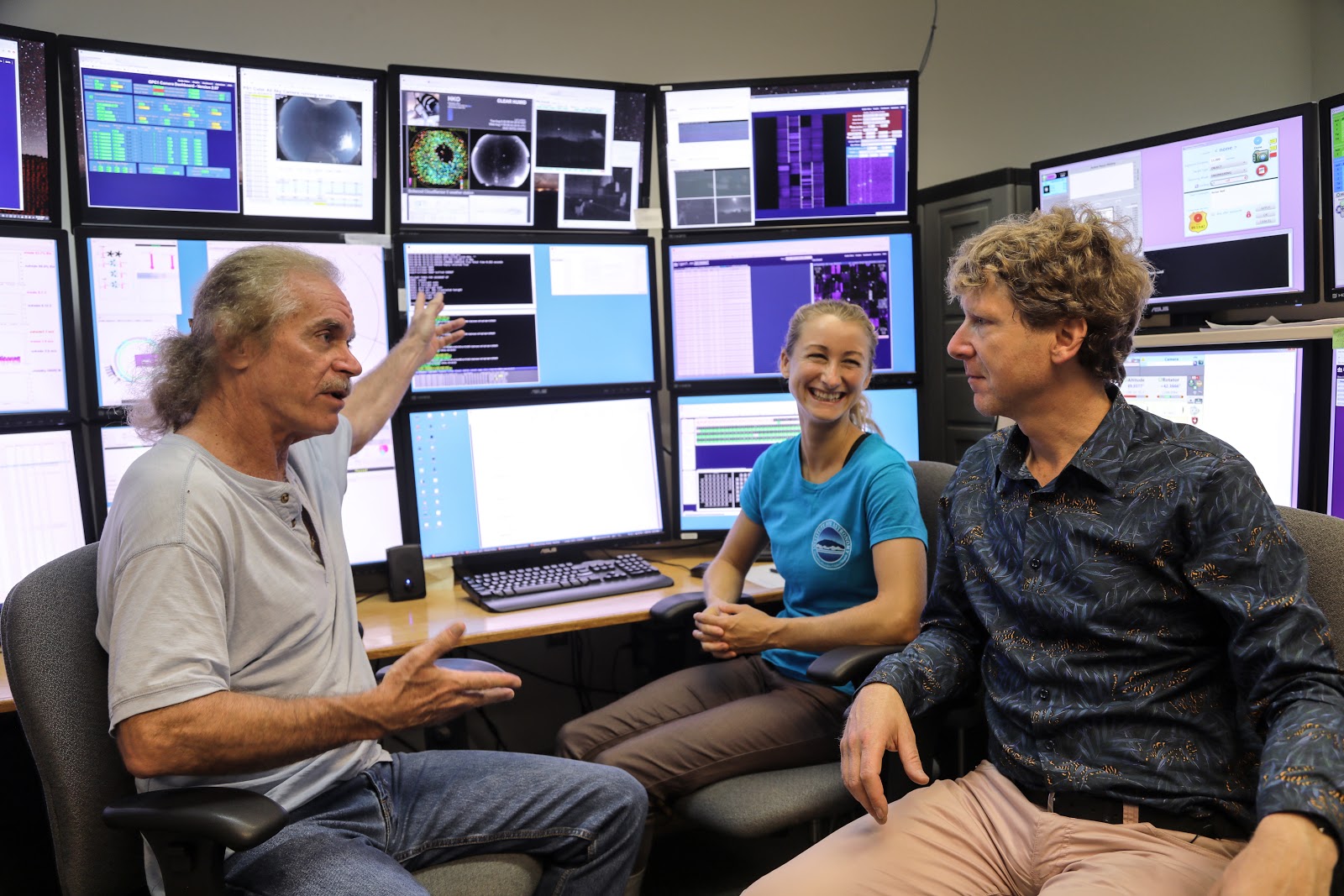
In this case, there’s a Herzogian moment. It’s a moment of humor sort of, and yet it does inform the whole thing. What we did there is that Werner narrates what this figure, the simulacrum as he calls it, says. Except it’s not at all what he says; it’s completely fabricated. We simply used the imagery which shows, for example, a mine, and there seems to be some kind of explosion going on. That has nothing to do with meteors, but now in this re-voiced narration, this miner is not a miner at all but he’s someone in the town. When the big meteor hit—which it never did—but when the big meteor hit, they all went down in the mines and lived down there and were the last and only survivors of the human species.
It’s a complete fantasy that has nothing to do with meteors, but it comes in the context of things just before it. In fact, we see in the museum they have a book by Jules Verne, a French writer, who wrote about some kind of—I forget which book it is but he did…
HULLFISH: 20,000 Leagues Under the Sea?
CAPALBO: Yeah, and he did Journey to the Center of the Earth. So, there is a history of fabrication, of storytelling around these apocalyptic things, so now we simply add the next chapter to it.
I think that’s where you can say, to get back to your question, is that, yes, this is a scientific documentary, but it’s a Werner Herzog film. Therefore, it’s going to be about something else as well. It has key things about the topic in the straight scientific way, but it has a take on it which is unique to Werner.
If you just want absolutely the textbook about meteors, this is probably not the place to start.
To your question, yes, we’re looking for and I’m helping him to shape those moments which stray outside of the apparent topic. In the end, it is those things which really are the topic because—I don’t think I’m saying anything against the film to say—if you just want absolutely the textbook about meteors, this is probably not the place to start. That’s to say, it has a lot of information, but it ends up with a much more humanistic view of it.
Another element we had to handle very carefully was found footage or archival footage. You may not know this, but the Kaaba, it’s a big black cube which is the holiest site I think in the world of Islam, is the thing that they make the pilgrimage to in Mecca.
HULLFISH: They walk around it.
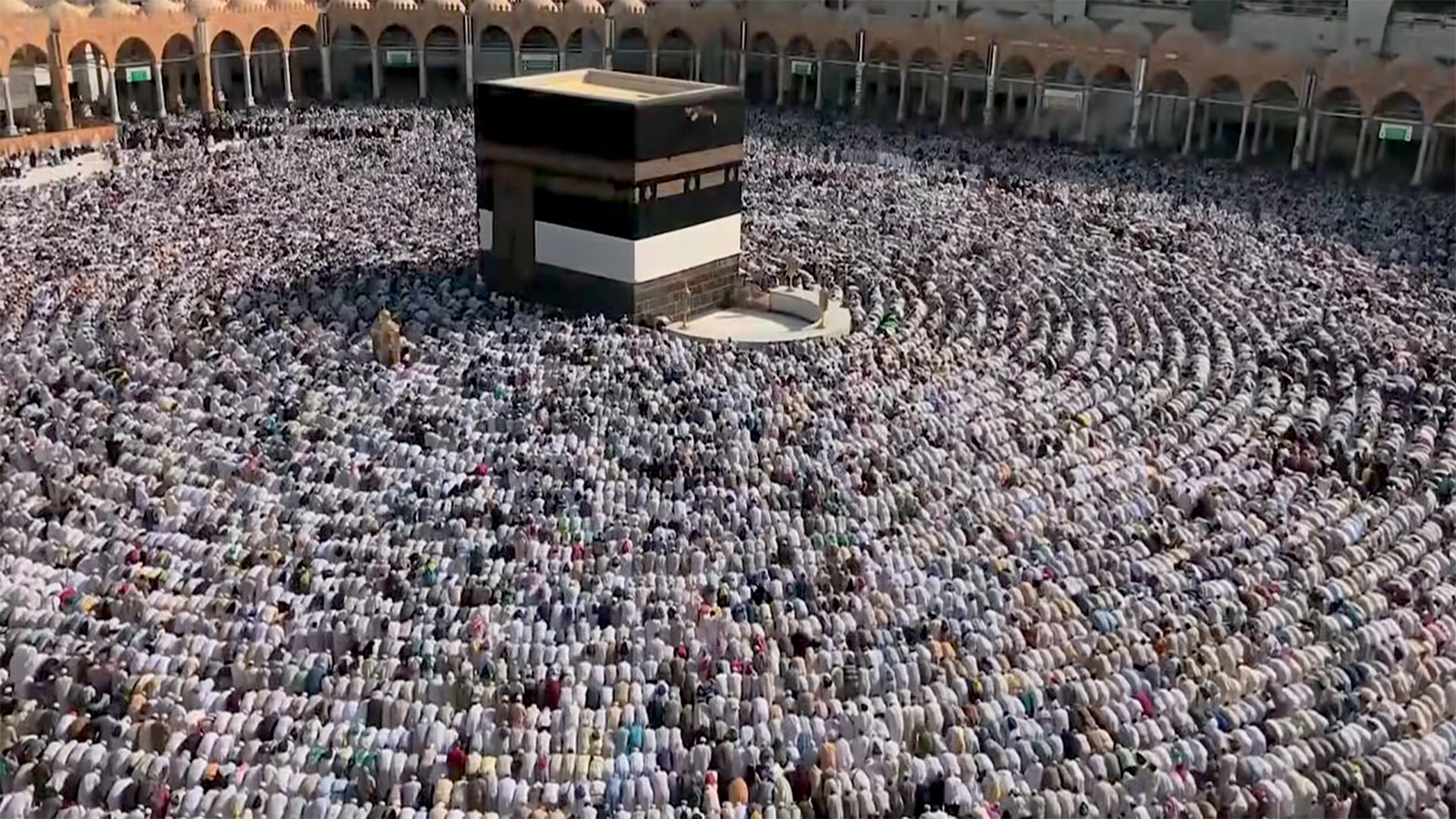
CAPALBO: Correct, and you’re to do this once in your life. What I didn’t know before that, is what that big thing is and why is it there. Well, the corner of it has a stone, not the big black cube—the big black thing is a constructed temple, essentially a hollow, empty thing—but in the corner of that black thing on the outside is a stone that is apparently, although not proven, considered to be a meteorite placed there by Muhammad years ago. So, that’s the thing when they go around it that they’re to touch or kiss that stone within the stone. It has kind of a silver frame around it.
In the context of talking about how meteors have had important cultural and religious impacts through time, we wanted to have a sequence that would get into this topic. Now, for a variety of reasons, one wants to tread a bit carefully there. They did not shoot there, although there was discussion of it. So, we found some footage, quite conventional footage, of Mecca and the people around the stone. That’s all been shot perfectly well. You can get that footage with no problem, but what we really wanted was something that got us to the actual meteorite stone, and that was much harder to find.
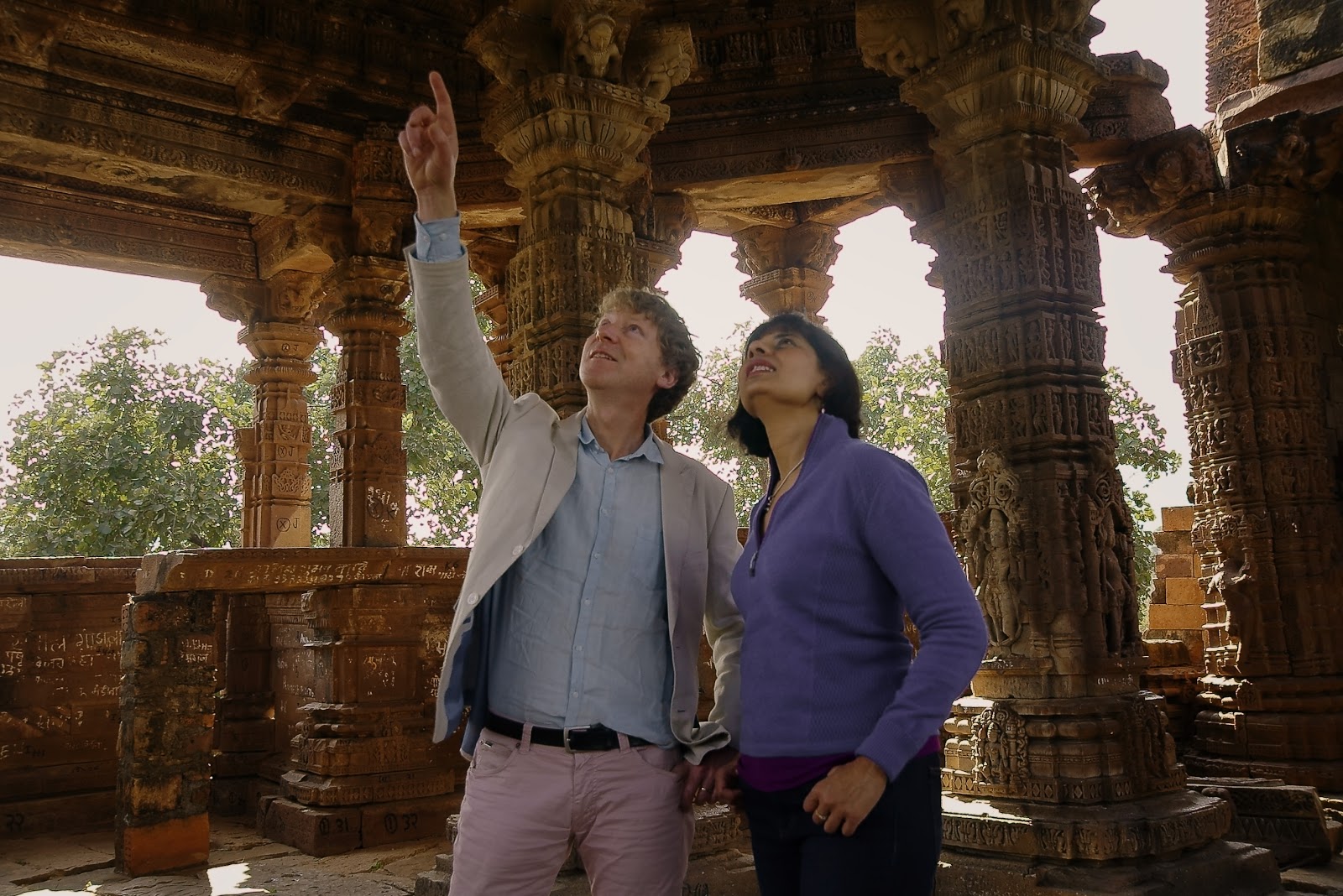
In the end, I just looked on YouTube and found someone with a cell phone who was a Pilgrim who had gone there and shot the crowd. It’s teeming with people. It was ecstatic. The footage was within inches of it. This was the footage we had to have. That was a challenge. How do you track that back and find it?
Well, the guy who shot that footage was a pilgrim. I mean, they’re dead serious about what they’re doing there, so he did not want this footage used if there was any possibility that it could put Islam or him or anything in any negative light, then no way possible. But various calls and whatnot were made and eventually we were granted permission to use this footage.
It’s amazing footage that really is not seen in a film. You can say, “Everybody sees it on YouTube. You can see everything there.” That’s true, but to be able to incorporate it into a film—and, again, I think this goes to your original question of the stays of a Werner film, which does come to the editing in a sense—in moments like that I think a lot of films might not allow the time to really let that be a real thing as opposed to just showing a little snippet of that. We actually linger there. We spend the time to actually experience it as the guy had, and I think that time might not be used in that way in a more conventional film.
I don’t know if Werner works the same way with other people or not, but I know he and I were certainly not working to a script.
HULLFISH: That’s really tricky to try to create a cohesive film with all these disparate elements. What are some of those tricks or what are some of the problem-solving techniques that you’re using to try to make that be cohesive?
CAPALBO: That’s a good question. I don’t know if Werner works the same way with other people or not, but I know he and I were certainly not working to a script. So, we’re creating the scenes, and I think that’s a word that applies more to a documentary by Werner than it might other documentaries where they are like scenes almost in a narrative film. They have the characters, we’ve introduced them, and we learn who they are, and then we get to what their contribution to the thing is. Then, we’re having a number of these stitched together to get a flow through the whole film and deciding how one topic leads to the next coherently.
In this case, it’s not a historical story, for example, where you’d say, “We’re just going to tell the story of this person, and that’s the story of the film,” so the narrative is laid out. I think this film was a bit of a challenge, in that regard. This narrative spans literally hundreds of millions of years. The earliest things that we’re talking about are that long ago. We’re talking about things in the future, we’re talking about huge events on a very big scale, but we’re also talking about very, very small things.
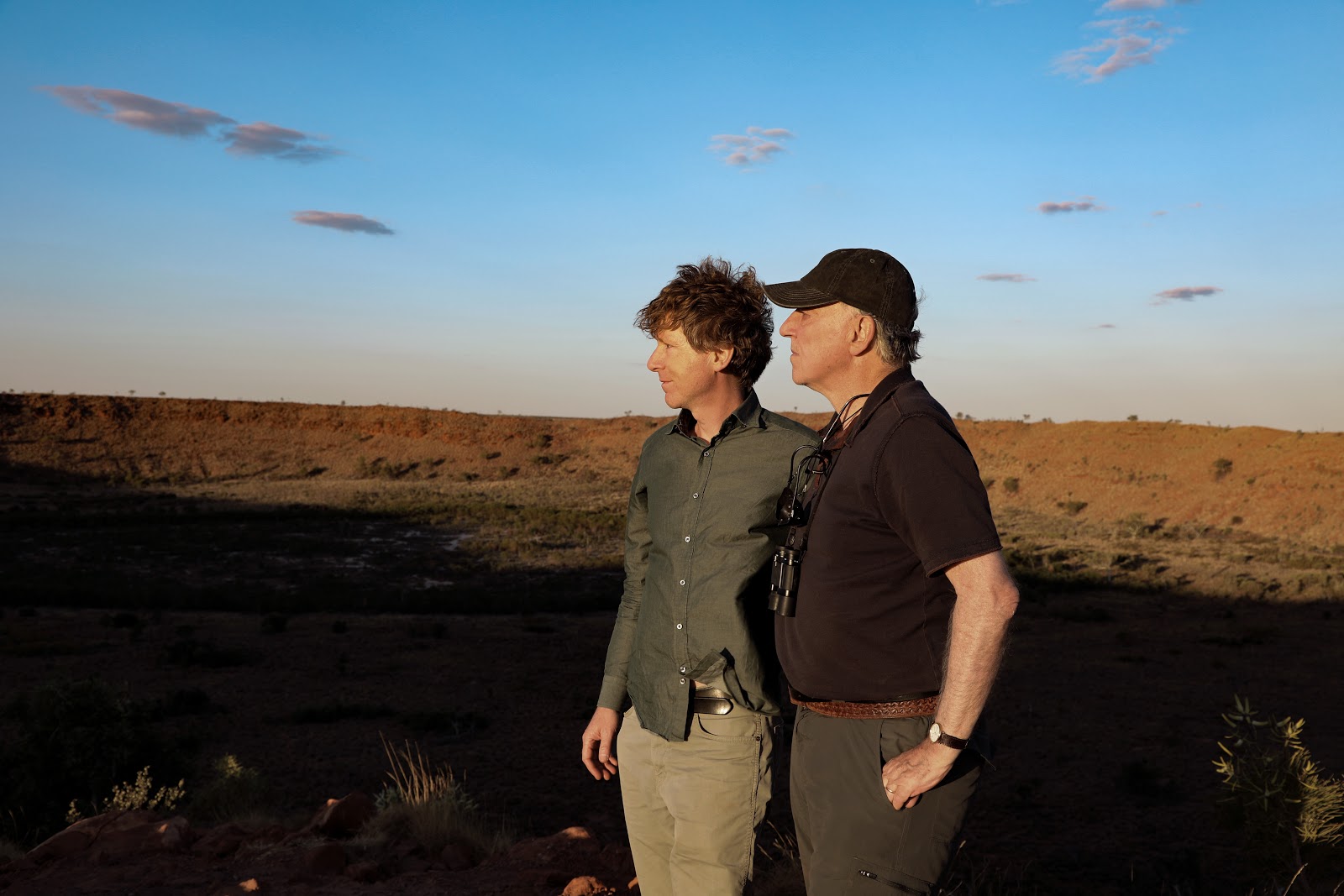
It was shot in six continents I think. It’s in America, Australia, Europe, Antarctica, Asia also, and the Hawaiian isles. They were all over the place, really the whole world and outer space actually because we have footage that came from NASA which is footage from a Japanese spacecraft. Believe it or not—I did not know this had happened, it just happened very recently—NASA has landed a small craft on an asteroid, collected a sample, and is bringing it back.
In order to regulate that, there isn’t really a thread in a conventional way, we had to be able to just feel it out and imagine, “Well, now that we’re on this topic, would it make sense to now go to this next topic? What are the connecting tissues?” As I said, there’s not a narrative anymore. In a sense, the narrative is to take these different views of this topic and eventually to try to bring it to some conclusion, and the conclusion that the film comes to is, I think, quite an unusual one. Maybe that, again, is something that Werner would encourage the film to have that someone else might not.
The conclusion that the film comes to is, I think, quite an unusual one.
In the end, the film comes to a very small island in the Pacific somewhere where shooting stars, or fireballs, is part of the mythology of these very native people who see it as part of a spiritual progress that when you die, you go on to one of these things and it gets shot off into space. They have a whole dance, a fire dance, which they do. It’s performed for the first time in 50 years for the stone, and that’s where the film ends up. In a sense, it’s the least scientific, totally nonscientific moment of the film, but in a way, it encapsulates all of that because in the end, we are humans. There’s a multiplicity of understanding.
HULLFISH: You mentioned that there’s no script. How do you know what to do every day? I’m working on a documentary, so I understand what could happen, but for example at the beginning, were there interviews shot, or did you start by saying, “Okay, I have this scene of the fire dancing. I will just worry about the fire dancing scene.”?
CAPALBO: Right. There are two things to say about that. One—and I think this is a known thing about Werner but if it isn’t you’re hearing about it now—not only is there no script, there are no transcripts. Transcripts are forbidden.
HULLFISH: Wow. Transcripts are forbidden.
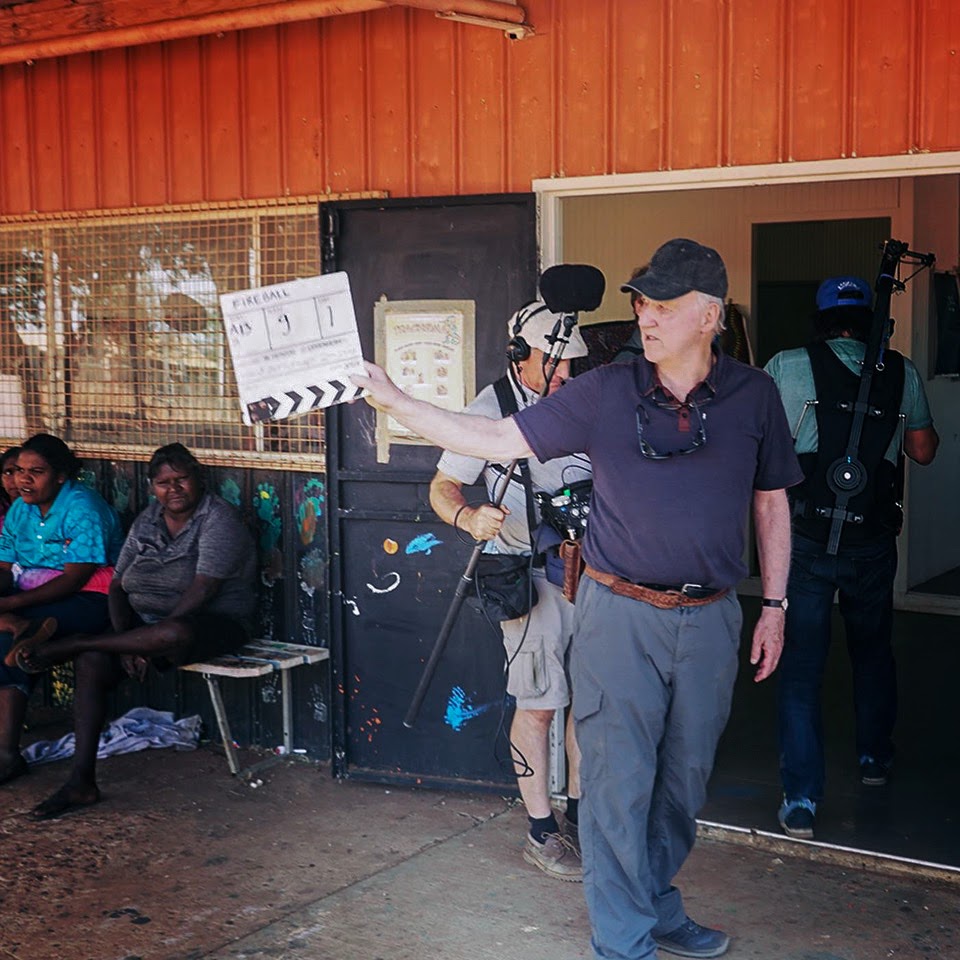
CAPALBO: Forbidden. There’s no transcript in the conventional sense. For every other documentary I work on, the first thing I do is I will burn a timecode, ship it off to the transcribers, it comes back, and now everybody has a document with this stuff. This is the part that we are free from.
What Werner and I do in the first days of editing—I would say the most grueling part of the process and he’s been doing it for years, I now do it with him and I do it on other things—is to log the footage by hand, which is not a transcription because it’s not word for word but enough that it’s like a half transcription. It requires looking at all the footage. You would think that everybody looks at all the footage. No, they don’t. Nobody looks at all the footage. You know that and I know that. Most people do not look at the footage, meaning they actually just sit there every second of it and watch.
You would think that everybody looks at all the footage. No, they don’t. Nobody looks at all the footage.
The thing about a conventional transcript is twofold. One, it can miss the great moments which on paper are just nothing. The guy answered a question and said, “Yes.” That’s what the transcript says. Then, you look at the footage and the guy had a mental breakdown and some tremendous reaction. It doesn’t appear on the transcript, and if you were just skimming through the transcript, you might fly right past that. The other side of that is things that in the transcript seem to be fascinating and incredible, but you look at the footage and the guy seems to be asleep when he’s saying that.
The advantage of doing it the way we’re doing it is that we’re already making selections, and there are certainly things which we know from that moment of seeing them that this will be in the film. We’ll say, “This moment here will be in the film.” We don’t know where, we don’t know what it’s going to do, but that’s going to be in the film for sure. Most often it does end up in the final cut of the film.
There are things that are just so amazing for reasons that we don’t know. How’s it going to fit in? No idea. What’s the topic going to be? Don’t know yet, but that’s good right here, and so we need that somewhere. You could say it’s almost working around them to say, “Well, we know we want that. How do we get into it?” Again, it’s almost a more narrative approach to say in the scene, “Whoa, we’ve got to find a way to get this take in there.”
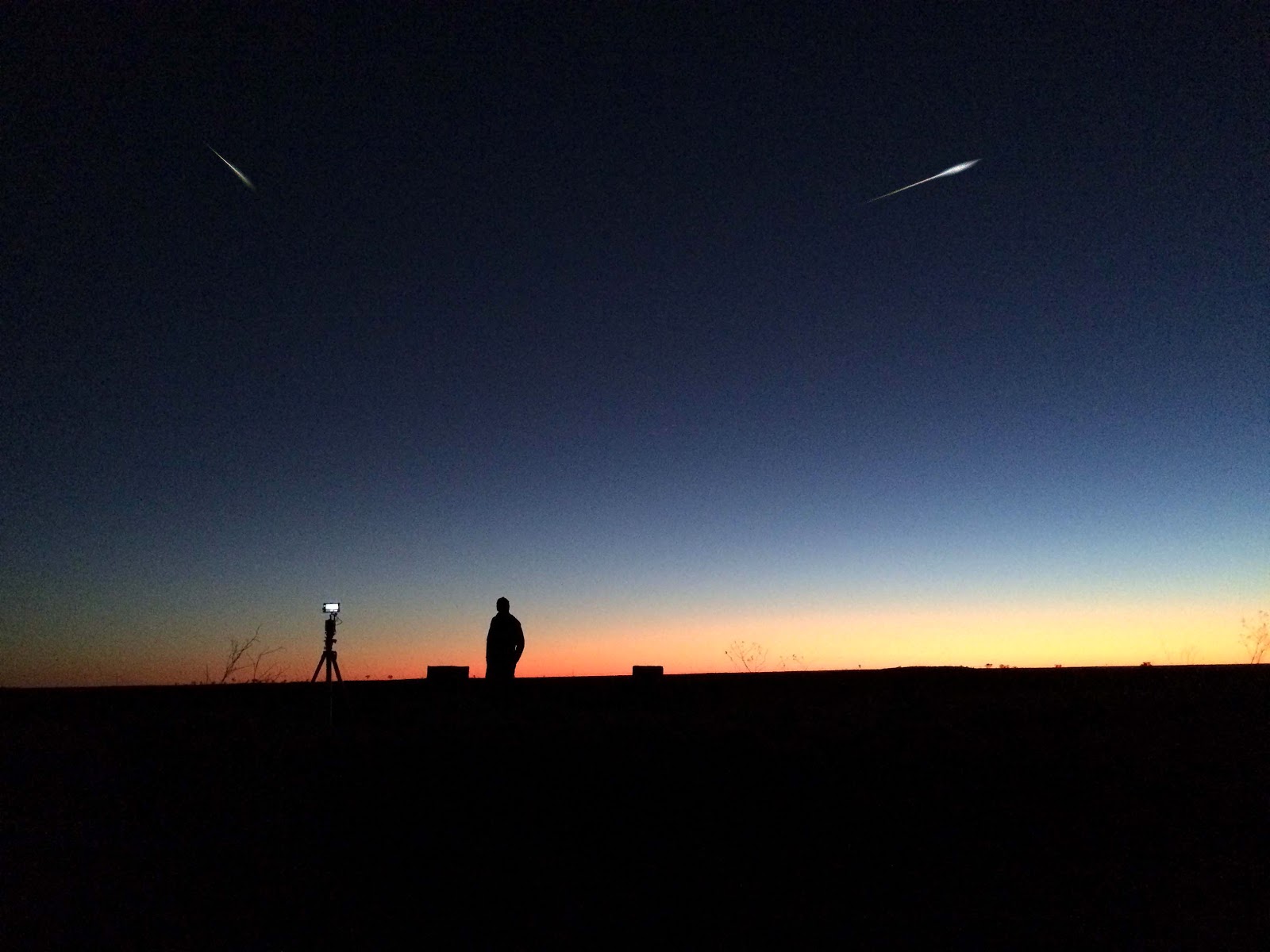
This film was shot over such a wide geographical area over some period of time. Some of the time the footage was coming in and I’m getting it first, but basically, we were able to go scene by scene, not yet knowing how the scenes might accumulate. Without following the script, I would say there are points in the process where we definitely take a conscious step back and say, “All right, what have we got? We’ve got this, then this. Maybe this one should come before.” There’s a bit of a swapping around in that way.
Of course, then we have to look for redundancy, but, generally, I think there is something to this idea that there’s a key moment in a given scene, in a given interview, or in a given topic that we know is going to be in the film. There is a way of figuring out how we arrive at it so that we’ll get the most out of it.
HULLFISH: What are you doing when you find those moments? How are you organizing? Are you putting that stuff in a bin? A selects reel? Do you stick it on a card and put it on a wall?
CAPALBO: No, nothing like that. Again, in the log, I think each of us has our language. This is a handwritten thing. In Werner’s case, he does it in a book. I think for all of his films, he has this “logbook,” he calls it. I do it on loose papers so that then I can put it in a binder and I can move it around. I can order it as I want to have access to it, but there’s timecode for everything on there.
Then, there are various marks to say, “This is a must be. This is a maybe.” Later when each of us is going through it’s very quick to say, “What about that moment?” I have marked this moment, the timecode is there. Boom. Pop it up. We look at it again, say, “That’s good. Let’s put this in now.” The thing is assembled that way. I don’t do cards with Werner, certainly.
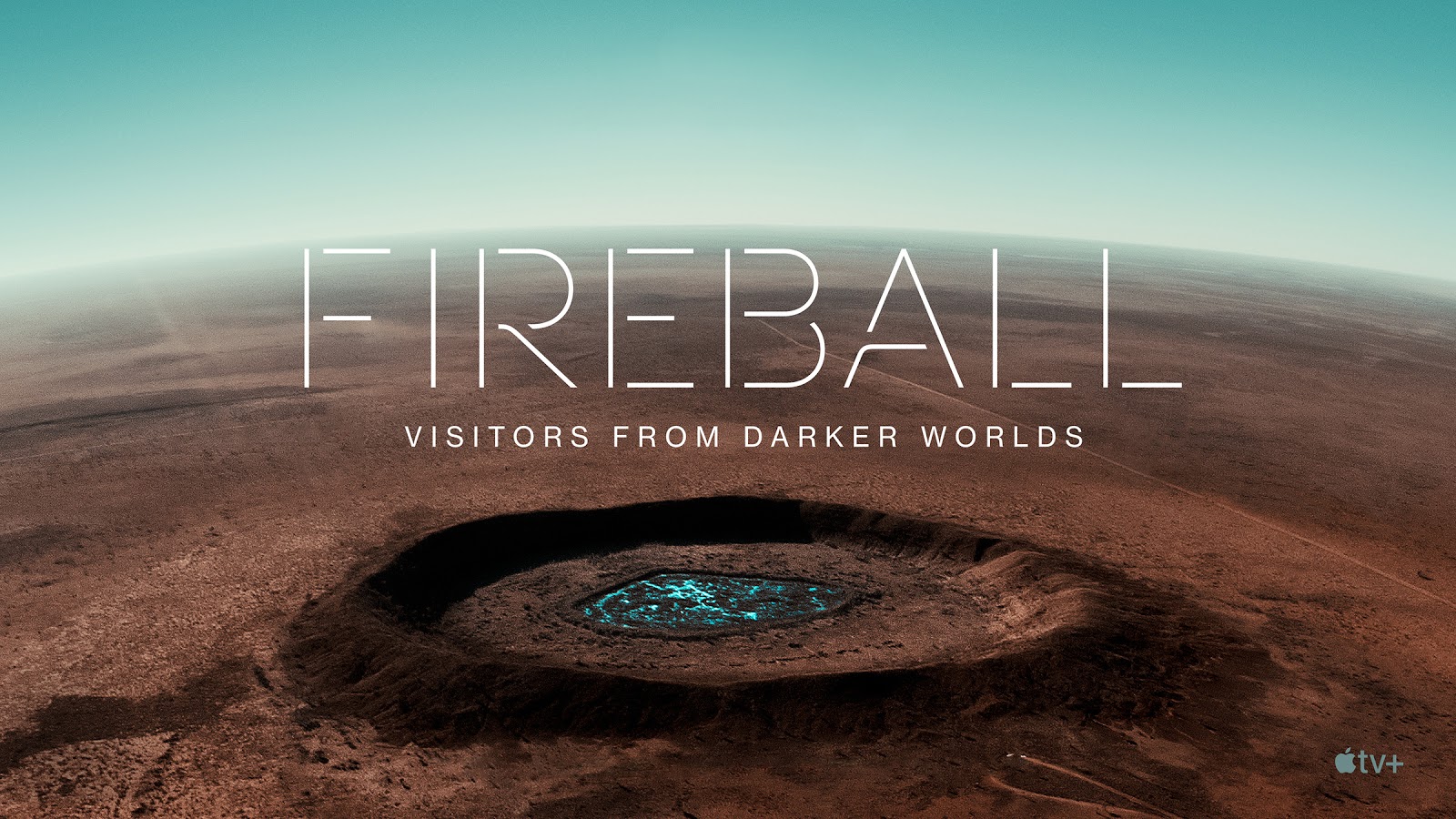
Particularly, once we’ve got a bit of the film assembled, then we’re able to step back at it and look at it. I might make a list that we can look at and say, “Okay, we’ve got this, this, this.” It’s showing what the form of the flow is at that point, so we don’t have to watch the whole thing over and over to see it. We see it with paper and then maybe questions come up, and we might move chunks around.
HULLFISH: How did you determine the beginning of the film? Did you know that the final fire dance scene was going to go at the end and did you add something at the beginning to lead to it?
CAPALBO: Yeah, I guess we did know that. We knew that pretty early. There’s a second dance that actually is at the beginning and that bookends the film. That’s also a kind of fire dance. Although it’s funny because it would seem as if it has exactly to do with our topic, but there’s no way that it could.
In the town of Chicxulub—which is where the biggest one hit that wiped out the dinosaurs and 90% of all life, and obviously, the town wasn’t there then—the town that is there now also has the Mayan temples nearby, and there is a Mayan fireball game. It looks not exactly like basketball, but done with a fiery ball—I don’t know what the thing is made of—but it’s flaming. They throw it to each other and they toss it through a hoop. There are huge crowds and they do it on the Day of the Dead, so it’s somehow connected to that.
The Maya knew nothing about the fact that a big meteor had fallen. There was no way they could have known. They didn’t. So, our film starts with that fire dance and ends with this other fire dance, which brings it together on a more human level, rather than just a scientist talking. There are things that are more evocative. The Maya actually has nothing to do with the topic, but visually it does. There is a connection between the Maya and the large asteroid, not that they knew that there was the connection.
There are these water holes called cenotes that are there in the Yucatan peninsula which people dive into. It’s a huge circle. In fact, they were created as a result of the impact tens of millions of years before.
HULLFISH: The jettisoned material from that impact.
CAPALBO: Yeah, and I think it caused the crust to sink. You cannot see a crater. It’s way too long ago. Actually, I think it’s only in the last 40-plus-or-minus years that it’s actually ever been figured out that that’s what was going on there and that is where the meteor did fall.
HULLFISH: So much of what you talked about—and I think about this with Werner films—is what the subtext is. So often the documentary is not about the topic, it’s about the subtext. How did you discuss that or how did he discuss that with you? Then, how did that affect your editing to understand what the subtext was?
CAPALBO: I think it guided us in two ways. Although in this case the interviews were not conducted by Werner, he was actually sometimes on camera and sometimes not, but I think he and Werner had discussed the kinds of questions that would be asked. I think the direction of the film is already in motion there because the questions are leading into topics that are not conventional, which go more to your subtext idea. They’re not just simply about giving us the facts, giving us the science, giving us the technical answer to everything.
There’s already an awareness that this film is ultimately about the subtext, which is how these meteors and so forth impacted us as humans, how they’ve changed our culture. Our world is very much actually created by that in a funny way, and ultimately, it’s even suggested that there is research ongoing asking if it’s possible that actually our very lives, life itself, is created by them. There are people looking into that and there’s evidence to suggest that could well be. That goes to very big topics.
So, we knew as we’re editing that those big topics are there, the subtext, although not gotten at directly. I think it would be very hard to walk into an interview and just immediately say, “Okay, so how does this impact the big picture?” You can’t get at that big question that way. I think it’s better to get at those big topics indirectly by the subtext, and also to allow the viewer to arrive at some of those connections himself. That keeps the viewer engaged. They’re not just being told, “Think this. Here’s what this is, here’s what this is, and this is our opinion of the topic,” and boom, that’s it. I think that’s the benefit of doing it in an indirect way.
For example, by ending with this fire dance, it’s not in Werner’s narration, “Oh, here I am, here we are tying it all together. This proves…” It’s nothing like that. We allow the people who are doing this dance to speak for themselves. We’ve kicked up a lot of this topic all over the place, and now you see it and you make your own conclusion of it. Particularly, as the film ends with these embers of a fire disappearing up into the sky, that’s a visual connection being made. We’re not underlining it by saying, “Here it is.” As you say, subtext is a much more powerful conveyor, I think, of the true meaning.
HULLFISH: How does that affect your pacing? Because I just watched a documentary last night where one of the characters said something that was pretty profound and—I don’t think they landed on it too hard or anything—but after that character said something, there was a very deliberate pause. They went to a shot, no dialogue, no music, and I thought, “That is so I can think about what I just heard.” What moments did you feel that you needed to give the audience some time?
CAPALBO: I think that’s something that we’re very conscious of in the editing, and there’s an awareness of when something needs to linger. That can be a number of different kinds of things, but particularly, I think in this film it’s two different types. One is simply that there’s just an overwhelming amount of information and we know that, “Okay, let’s just shut up for a minute here and let people just absorb. Stop for a second. They can’t take any more in.” It’s that kind of a thing that might lead to a moment of just pure visual material.
Okay, let’s just shut up for a minute here and let people just absorb. Stop for a second. They can’t take any more in.
There’s a moment, for example, where we are looking through a microscope at some slices of a meteor in an amazing pattern. We’ve heard a lot about this topic and what they could be, and we just thought, “Let’s just look at these things for a while. Let’s not say anything.” You can look at them. They’re just a pretty pattern. It just allows you to absorb that information.
That’s one kind of a thing, but there’s also the type—which may be more what you were just talking about—where there’s really quite a profound thought about something that you really need to wrap your mind around. Not a technical thing but maybe it’s more of a subtext thing that’s come at you that you want to let that linger or resonate that allows the audience to ponder that before we go onto the next thing.
I think because there’s almost never music during any kind of an interview…
HULLFISH: So then those microscope moments would be places where music would hit?
CAPALBO: Exactly, because music can get that mood instantly, which is another benefit in terms of how music is used in the film.
The team that is working on this film, myself included, are people and collaborators that Werner has worked with multiple times before in all cases. I’ve cut a number of films that the DP has shot. He must have shot about 20 films. The composer in this case for most of the music is also a composer that Werner has worked with many times, a Dutch cellist composer, Ernst Reijseger. I know him now through working on this film. The music is available to us almost from day one, and the music is going into the film very early on and becomes part of the film very early on.
HULLFISH: So, you’re not temping?
CAPALBO: We are not tempting. I mean, occasionally for one reason or another something might change a bit or there was a different version of the same piece in this case. We used a couple of cues in this that were not by him, and I think there was one where we had to swap out later because of rights issues, but basically for the majority of the cases that music is available to us very early and we’re using it and putting it in there and it becomes part of the scene from day one really, from the earliest part of the editing.
Now, in this film, there’s essentially no music—or barely any music—during any of the interviews. So, the music is coming in at precisely these more reflective moments that have to do with allowing our audience to digest and to linger with what we’ve said. The one other case of the music is to allow the music to help us build the scene to a more poetic moment.
There’s a scene in Antarctica that has this tremendous visual of this incredible otherworldly landscape. In fact, Antarctica—I certainly did not know this, although once you think about it it makes sense—is a hunting ground for meteorites. Why? Because meteorites are falling everywhere all the time. They’re all over the place, but how would you ever find them? There, if there’s a rock on the surface, it can’t be anything else. Where else could it have come from because it’s just sheer ice? In fact, they’re pushed up. It’s a much bigger process. They haven’t just necessarily landed there.
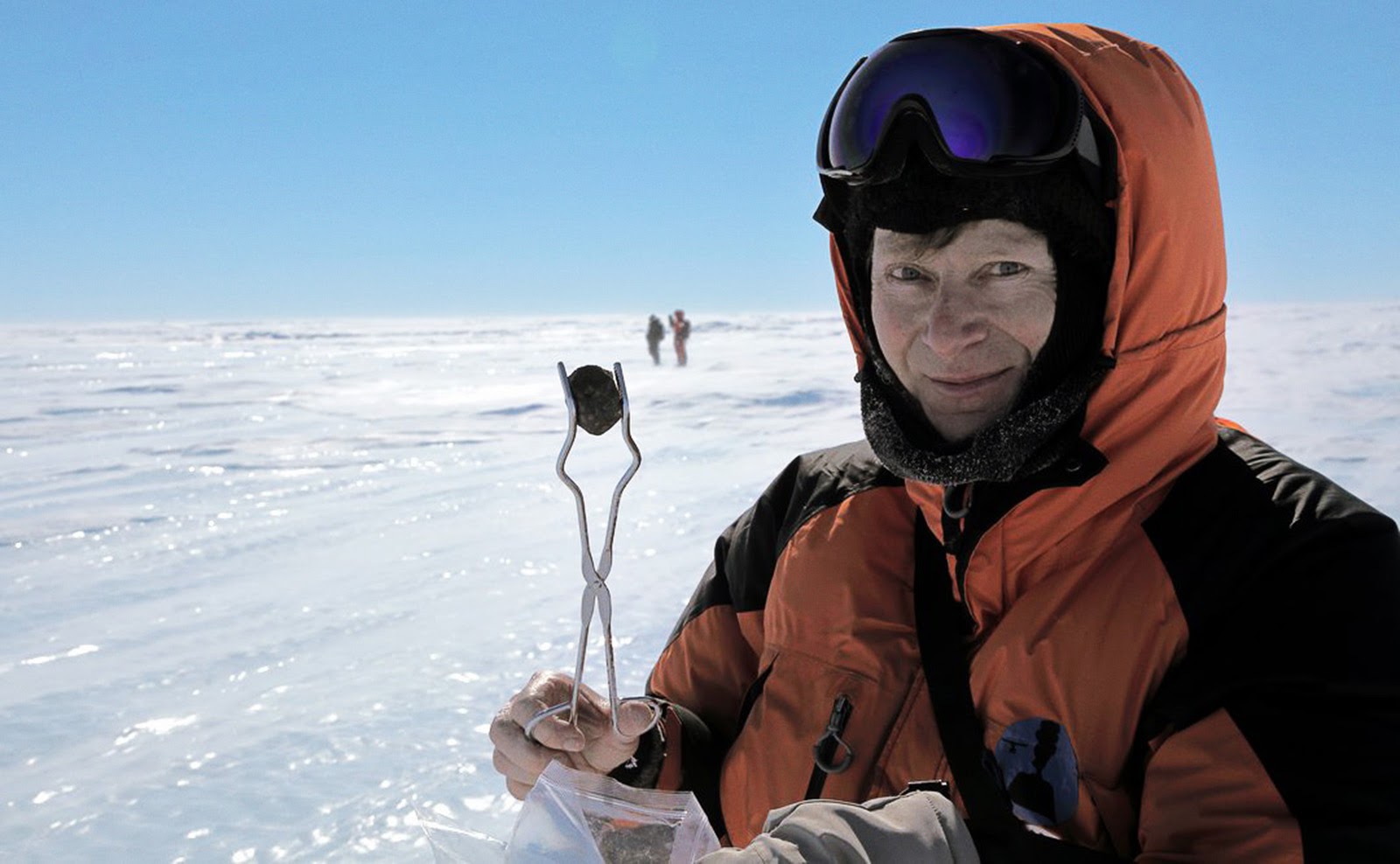
Essentially these meteor hunters go there in these expeditions to find these things. They have a whole system that looks like in cop films where there’s a crime scene and you get that row of cops walking through a field, looking. This is the same. You’ve got a row, spread out so that each has the maximum field of their vision, I guess, about 20 feet in each direction. So, this leads to a long-winded way of getting to this rather more poetic use of music and image, which I think we use to maximum effect there.
We veer off the topic a little bit, but again, to arrive at the subtext, which is how mankind is a very small thing. There’s this vastness which we can experience here. There’s a moment of Werner’s narration, where we see one of our guys walking in search of these things, and there’s ice as far as you can see. As Werner says, you could continue to walk straight ahead for 4,000 kilometers and you will encounter nothing. That gives a sense of our scale within this much bigger universe, which is also the subtext of how little we know, if you in comparison to these things, including these stones falling out of the sky that are just part of this much, much bigger thing that we are along for the ride on.
HULLFISH: I spoke to a group of NYU students this morning, and one of them said she was working on a documentary and was feeling incredibly overwhelmed with just a lot of material, and there’s no organization of it as there would be in a scripted narrative. She didn’t have a clue where to start. What advice would you have for this woman?
CAPALBO: Just start is the first thing [laughs].
HULLFISH: That’s exactly what I told her. You just have to start someplace.
CAPALBO: You have to start someplace. I have to say I prefer to work without a script in a doc because it’s more challenging. So, if you’re working without a script my advice would be to just start, but be as aware as you can be, really pay attention to what you have, and let what you have guide you to the next thing and let that inform. Because then you’ll have something which organically leads you rather than something that’s just on paper.
That again goes to that transcript idea; yeah, it may look good on paper, but it’s always stronger if you just started and you can say, “All right, I’ve got this guy. Here’s this guy talking about something,” or, “Here’s an image of something. What does that suggest to me?” Then, you make the connections. “Oh yeah, right. I remember seeing that other image of whatever. Let’s go get that.” Now you suddenly start building the thing. The other thing is: don’t look back. Just keep going forward.
HULLFISH: It’s like when you’re up climbing Yosemite Half Dome. Don’t look down.
CAPALBO: Don’t look down. Exactly, because otherwise, you’ll never get to the end. If after you’ve got your little scene, you’re already back at the start of it, you’ll never get out of it. So, you just get that, now just put the next thing, and the next thing, and the next thing. Eventually, you’ll have something big enough that you can now step back from and say, “Ah, okay. I see what it is now.” Then, maybe you’ll have to move things around.
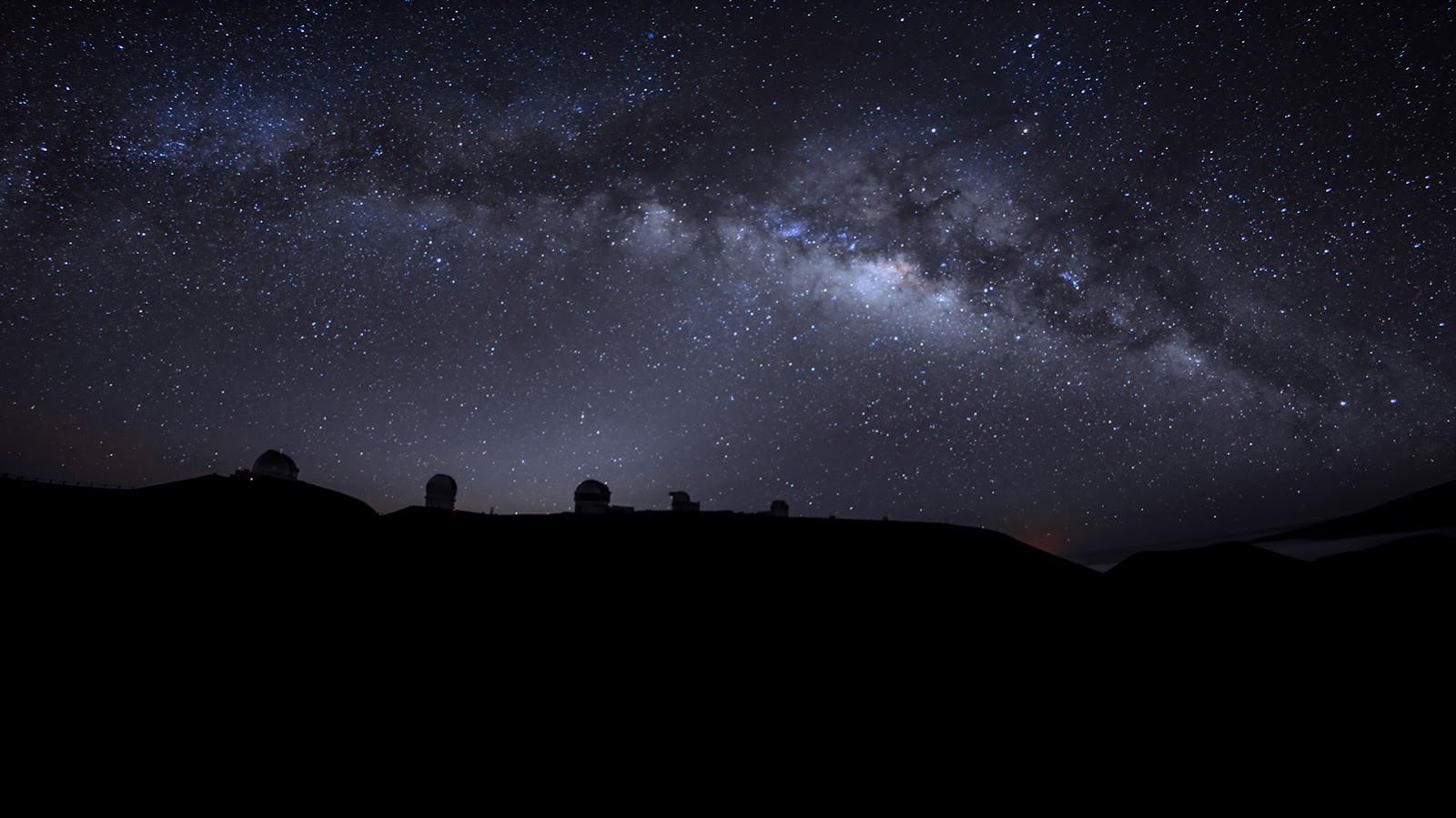
HULLFISH: To some extent, I think a sense of patience helps to not get overwhelmed or finding where to start. You need to just do something and realize you’re not going to be productive immediately, and that’s okay. That all you’re going to do is watch the film and not even know what to do. That’s fine. Just watch the film. It’s one of the reasons why when I’m working, sometimes even on narrative, I will try to watch dailies or watch footage that I know I’m not going to cut that night. I just watch it and then I go home.
CAPALBO: Right. Just to let it sink in a bit.
HULLFISH: Yeah. Any other tips like that about not getting overwhelmed? How do you organize material inside your project? Are you on an Avid?
CAPALBO: I’m Avid, yeah. I have my system.
HULLFISH: What’s the system?
CAPALBO: Well, one thing that I think is particular to Avid, which is why I would never switch, is that—and this is purely technical speak but maybe some of your audiences is a technical audience—for me, the key way to edit is that I edit from sequence to sequence. If you do Avid, you’ll know what I’m talking about.
HULLFISH: Yep. A lot of Premiere editors do the same thing.
CAPALBO: You can do it in Premiere?
HULLFISH: Oh, a hundred percent. Yep.
CAPALBO: Okay. I know you couldn’t do it in Final Cut Pro, which is the only other one I knew a little bit at one time.
HULLFISH: So, you edit from sequence to sequence? Are you creating a selects reel of some kind?
CAPALBO: Correct. For example, B-roll just all goes together, maybe not for the whole film but for one section or one topic. Or, let’s say that I’ve gone to find archival footage and it gets shipped in to me also. The producers are looking for it. They’re tossing me bins of stuff, most of it useless, but they’re tending to say, “Let’s just get everything.” So, now a hundred clicks to get to it if I’m always saying, “Oh, here’s a clip, here’s a clip…”
In order to quickly be able to look through stuff, I just take them all and put them in one sequence. Now it’s just one whole long one-hour movie that I just sit through very quickly and land on something. If need be, I can mark something there as, “This was good.”
So, I arrange things always quickly into sequences, and then I’m cutting from those so that I have related material grouped together. Once I’ve done all the syncing and all that stuff, I’ll create sequences of that, but if there were, for example, a number of interviews that are somehow related, there’ll be in one sequence. I don’t need to think of it as separate things. Now they’re already part of one thing.
HULLFISH: Yep. All the asteroid hunters in Antarctica, walking across the ice is a sequence.
CAPALBO: Exactly. Boom. That’s all right there. Now you would think normally the editor’s opinion is, “You want as much of everything at all times as possible.” I don’t subscribe to that. In fact, you can go the other way.
This goes back more to Werner’s and he really gets upset if there’s a researcher, let’s say, that’s going to go to a library and they have photographs of meteors or something. They will come back with every photograph in the museum, and there’s going to be a thousand of them. This drives him and me to distraction. I think that might be because he’s, in a way, thinking as an editor, he says, “The way you do it is you go in there and say, ‘I want this one, this one, and this one. Done.'” With the proviso that later we’re not going to cry, “Gee, I wish we had all of those.” No, we’re going to use this one and this one, and that’s it. The selection has already been made. That’s an extreme example.
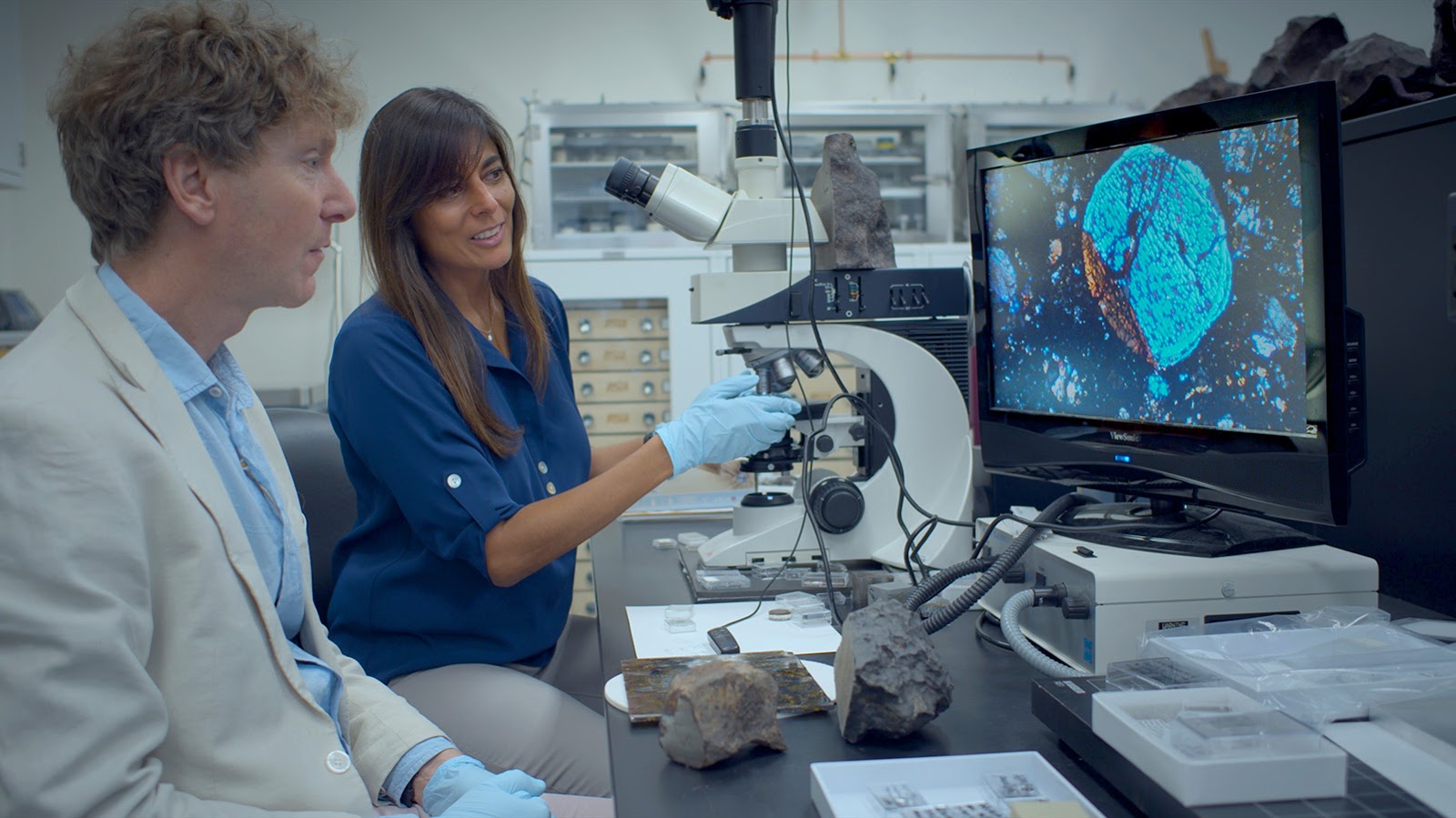
Again, working with the same cinematographer that he’s worked with a lot, he is well versed on this. The B-roll is very specific, so I’m not wading through hundreds and hundreds of shots that you’re just looking at as just garbage, and now you’re there lingering around. So, I don’t have that problem. There tend to be fewer things. It’s a much more manageable amount, and the filtering is already happening.
HULLFISH: The filtering is the other thing that keeps you from getting overwhelmed.
CAPALBO: Yes, exactly, and I think you need to be bold about it and not say, “Okay, I’m going with this shot, and well, I might use this one. I might do this…” No. Make the choice, make a strong choice, and move with that. Don’t be looking back constantly asking, “Oh, should I go back? Maybe there was a better shot. Maybe there was this…” That’s already going backward.
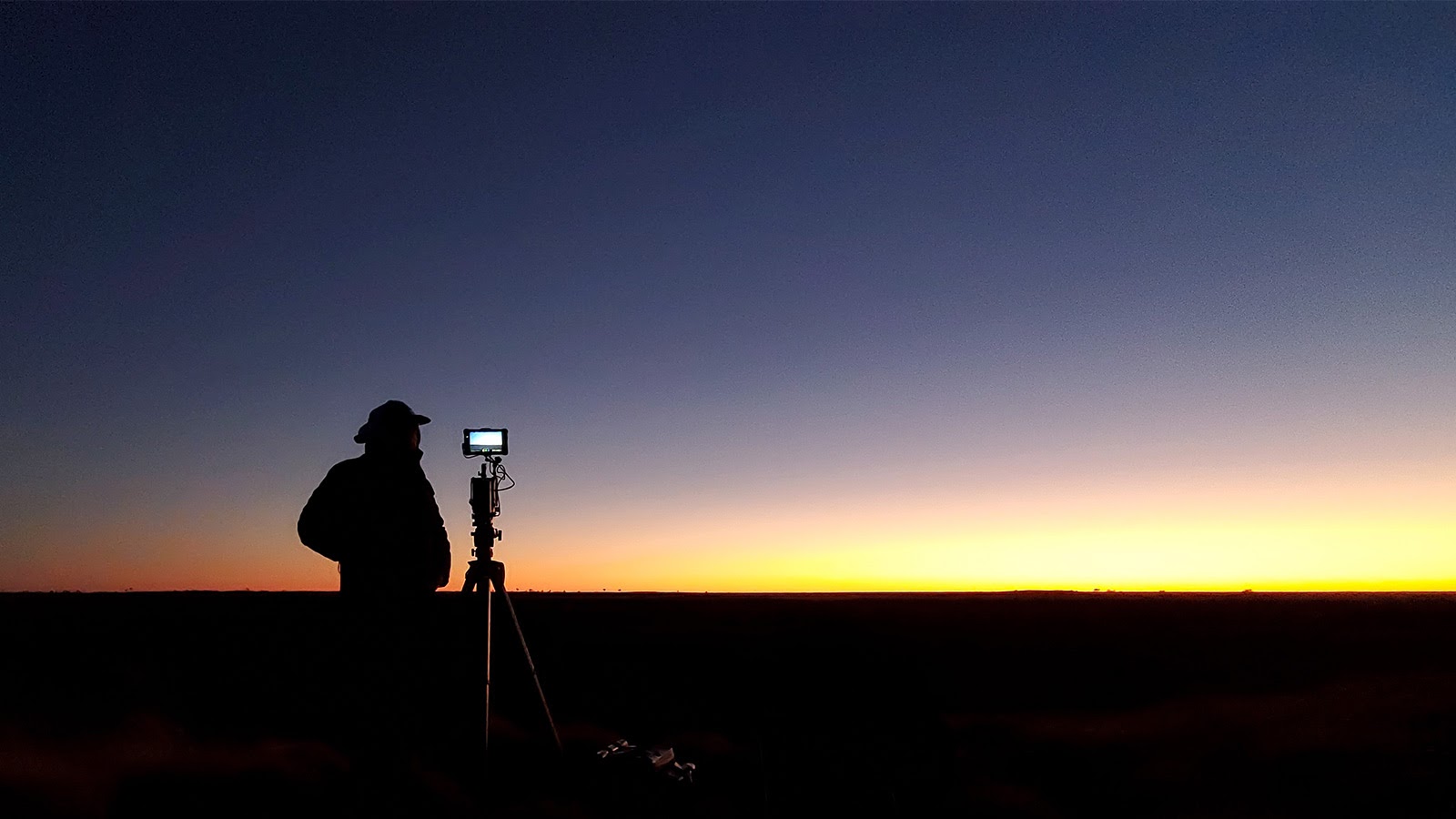
I think the key is to keep going this direction, which is something I appreciate very much working with Werner is that he goes along with that. Moving forward as much as possible. Of course, there are times when you have to look back, but as a philosophy and as a way to not get overwhelmed, make strong choices and stick by them.
Maybe you come to a point later where you say, “Well, okay, there is that one thing, and maybe I should redo that.” Okay, fair enough, but you would not have gotten there in the first place if you’re not willing to make those strong choices and live with them. Be open to what they tell you and let them guide you to the next thing to really see what you’ve got and keep moving forward.
HULLFISH: Amen. A great way to finish this interview. Thank you, Marco, for some really great wisdom about editing, and I look forward to seeing the film sometime soon.
CAPALBO: Thank you, Steve. I look forward to chatting with you again on the next project.

